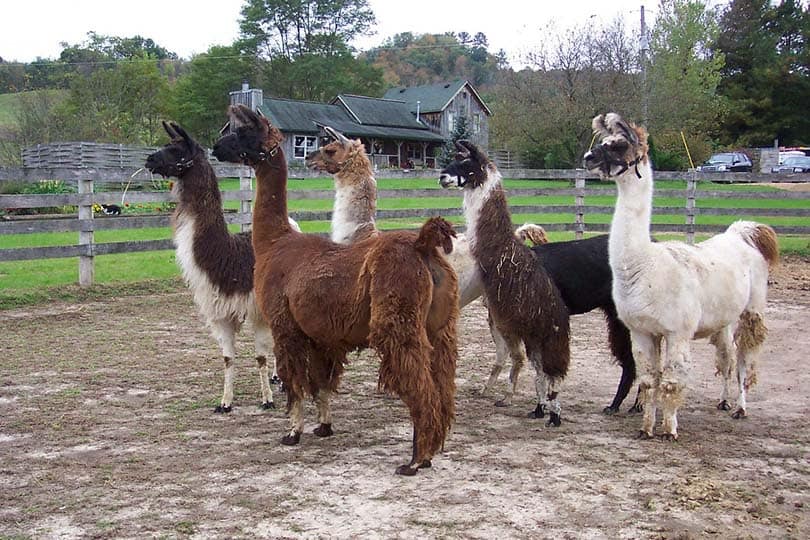A common inhabitant of petting zoos worldwide, llamas are also found on farms, working as pack animals, and wearing pajamas on the pages of a popular children’s book series. But where do llamas actually come from? Llamas are native to South America, primarily the Andes Mountain regions of Peru and Bolivia. However, they don’t live in the wild but are domesticated animals only.
Keep reading to learn more about where llamas are from and the roles they play there. We’ll answer a few other burning questions about llamas as well!

Where Are Llamas From?
As a species, llamas are members of the camel family, sharing the same basic body type and long necks as their desert cousins. Llamas are considered domesticated, rather than wild animals, and there is no longer a wild population of them. The first llamas were tamed and put to work by humans 4,000-6,000 years ago, making them possibly the first known domesticated animal.
Llamas originated in the Andes Mountain region of South America, mainly in the countries of Peru and Bolivia. They were key to the survival of the early people groups of the region, serving as work animals and as a source of food and furs. Llamas, like their human owners, suffered mass destruction with the arrival of European settlers to their area and nearly became extinct in the 16th century.
Llamas were first brought to America in the 19th century. Since then, they’ve become popular as pets and pack animals for wilderness trekking companies. They’ve also served as guard animals for other livestock such as sheep. Some farmers raise llamas as a source of wool for weaving.
In their native South America, llamas are still used in a variety of ways, including as pack animals. They serve as a source of meat and milk for eating and wool and leather for making clothes. Their dung is also burned as a fuel source in some areas.

Are There Really No Wild Llamas?
While there may be the odd feral llama just like there are feral cats, there is no true wild population of llamas. Llamas are closely related to two other species—guanacos and vicunas—who are wild. All three species are members of the camel family and similar in appearance, although llamas are much larger than their wild relatives.
Do Llamas Spit?
Even people who know nothing else about llamas usually know that they have a reputation for spitting. But is it true that llamas spit? Yes, the rumors are true—llamas do spit, but generally only at each other rather than humans.
The behavior is mainly used to communicate and establish dominance and social order. Frightened or threatened llamas might spit at people, however. Pet llamas usually only spit at humans regularly if they were bottle-raised and spent too much time with humans when they were babies.

What Animals Eat Llamas?
Depending on where they live, llamas are at risk from any large predators in the area. Ocelots, mountain lions, and coyotes are all known to hunt llamas. However, llamas are pretty good at spotting predators before they get too close and they often play the role of flock guardians to smaller livestock like sheep.
- Related Read: What Do Llamas Eat in the Wild and as Pets?
Conclusion
Llamas are truly unique animals both in appearance and personality. These traits have allowed their popularity to spread far beyond their original South American homeland. While llamas may never make as much impact on the world as they have native Peruvian and Bolivian people, they’re sure to make an impression if you do get the chance to meet one. Even if they don’t spit at you!
Featured Image Credit: Noe Besso, Shutterstock

